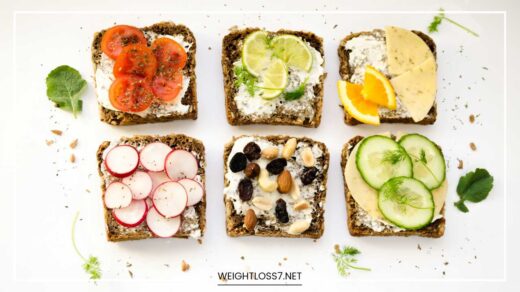How to Lose 10 Pounds in 2 Weeks

Lose 10 Pounds
The Ultimate Guide: How to Lose Weight Safely and Effectively (with a Focus on 2-Week Jumpstart)
The Balancing Act of Weight Loss
In today’s fast-paced world, prioritizing health and well-being is no longer a luxury, but a necessity. It’s natural to desire a quick and effective way to shed unwanted pounds, whether for an upcoming event, a general health boost, or simply to feel better in your own skin.
However, achieving sustainable weight loss requires a delicate balancing act. Crash diets and extreme exercise routines may offer quick results, but they are often unsustainable and can be detrimental to your health.
This comprehensive guide will outline actionable steps to help you lose weight effectively, with a particular focus on jumpstarting your journey with a healthy two-week plan.
We’ll delve into the science of weight loss, explore various dietary approaches, and provide exercise recommendations tailored to different fitness levels.
We’ll also address the importance of sleep, stress management, and building a sustainable support system for long-term success.
Understanding Weight Loss: The Calorie Equation
Before diving into specific strategies, it’s crucial to grasp the fundamentals of weight loss. In essence, losing weight boils down to creating a calorie deficit – burning more calories than you consume.
Our bodies use calories for energy, and when we consume more calories than we burn, the excess gets stored as fat.
Conversely, when we burn more calories than we consume, our bodies tap into stored fat for energy, leading to weight loss.
Factors Affecting Weight Loss:
Several factors influence how quickly and effectively you lose weight. These include:
- Basal Metabolic Rate (BMR): The number of calories your body burns at rest to maintain basic functions like breathing and circulation.
- Activity Level: The amount of calories you burn through daily activities and exercise.
- Thermic Effect of Food (TEF): The energy your body expends digesting and absorbing food.
- Muscle Mass: Muscle tissue burns more calories at rest compared to fat tissue.
- Genetics: Some individuals are genetically predisposed to store or burn fat more efficiently.
- Age: BMR tends to decrease with age, making it slightly harder to lose weight as you get older.
Setting Realistic Goals: Aim for Sustainable Progress
While losing 10 pounds in two weeks is possible, it’s important to be realistic and set achievable goals. Rapid weight loss can be challenging to maintain and may not be the healthiest approach. Aim for a gradual and steady weight loss of 1-2 pounds per week for long-term success.
This allows your body to adapt to the changes, reduces the risk of nutrient deficiencies, and increases the likelihood of keeping the weight off in the long run.
The Foundation: Building a Healthy Diet
Diet is the cornerstone of any weight loss plan. The two-week jumpstart plan will introduce you to healthy eating habits you can build upon for long-term success. Here are some key principles to follow:
- Focus on Whole, Unprocessed Foods: Prioritize whole grains, fruits, vegetables, lean protein sources, and healthy fats like nuts, seeds, and avocados. These foods are packed with essential nutrients that keep you feeling full and support your overall health.
- Minimize Processed Foods and Added Sugars: Processed foods are often high in calories, unhealthy fats, sodium, and added sugars. Limiting these foods will help you reduce calorie intake and improve your overall diet quality.
- Embrace Macronutrients: Macronutrients – carbohydrates, protein, and fat – are essential for different bodily functions. Aim for a balanced intake of all three throughout the day to ensure you’re getting the nutrients you need.
Dietary Approaches for Weight Loss:
Several dietary approaches can promote weight loss, each with its own set of pros and cons. Here’s a brief overview of some popular options:
- The Mediterranean Diet: Emphasizes fruits, vegetables, whole grains, legumes, fish, and healthy fats with moderate amounts of poultry and dairy.
- The DASH Diet: Designed to lower blood pressure, it focuses on fruits, vegetables, whole grains, low-fat dairy, and lean protein sources, while limiting saturated and unhealthy fats, sodium, and added sugars.
- The Flexitarian Diet: Promotes a plant-based diet with occasional inclusion of meat, poultry, or fish.
- Intermittent Fasting: Restricts eating to specific windows within a 24-hour period.
Choosing the Right Diet for You:
The best diet for you depends on your individual preferences, health conditions, and lifestyle. Consult a registered dietitian to discuss your options and develop a personalized plan that aligns with your goals and medical history.
Planning Your Meals: Portion Control and Mindful Eating
Even healthy foods can hinder weight loss if consumed in excess. Here are some key strategies for portion control and mindful eating:
- Use Smaller Plates: Studies show that people tend to eat more food when presented with larger plates. Using smaller plates can visually create a more satisfying portion size and help you control calorie intake.
- Read Food Labels: Pay attention to serving sizes and calorie counts on food labels. This awareness helps you make informed choices and avoid hidden calories.
- Practice Mindful Eating: Slow down and savor your food. Focus on the taste, texture, and aroma of each bite. Chew thoroughly and avoid distractions like television or your phone while eating. This allows your body to register satiety cues, preventing overeating.
- Plan Your Meals and Snacks: Having a plan in place can help you avoid unhealthy choices when hunger strikes. Prepare healthy meals and snacks in advance to prevent grabbing convenient, processed options.
The Two-Week Jumpstart Plan: A Sample Meal Guide
This sample meal plan provides a foundation for healthy eating during your two-week jumpstart. It emphasizes whole foods, portion control, and a balanced intake of macronutrients. Remember, this is just a sample, and you may need to adjust it based on your individual needs and preferences.
Breakfast (Choose One):
- Greek yogurt with berries and a sprinkle of granola (protein, fiber, healthy fats)
- Whole-wheat toast with scrambled eggs and avocado (protein, healthy fats, complex carbohydrates)
- Smoothie made with spinach, banana, protein powder, and almond milk (protein, vitamins, minerals)
Lunch (Choose One):
- Grilled chicken salad with mixed greens, chopped vegetables, and a light vinaigrette dressing (protein, fiber, vitamins)
- Tuna salad sandwich on whole-wheat bread with lettuce and tomato (protein, complex carbohydrates, vitamins)
- Lentil soup with a side salad (protein, fiber, vitamins, minerals)
Dinner (Choose One):
- Salmon with roasted vegetables and brown rice (protein, healthy fats, complex carbohydrates)
- Turkey chili with a side of whole-grain cornbread (protein, fiber, complex carbohydrates)
- Vegetarian stir-fry with tofu, vegetables, and brown rice (protein, fiber, complex carbohydrates)
Snacks (Choose Two per Day):
- Fruits with nut butter (fiber, healthy fats)
- Carrot sticks with hummus (fiber, protein)
- Hard-boiled egg (protein)
- Greek yogurt with a sprinkle of berries (protein, calcium)
- Handful of almonds (healthy fats)
Staying Hydrated: Water is Your Best Friend
Proper hydration is crucial for overall health and can significantly aid in weight loss. Water helps regulate body temperature, aids in digestion, and can even curb appetite.
Aim for at least 8-10 glasses of water per day. You can also include unsweetened herbal teas or black coffee throughout the day for additional hydration and flavor variety.
Exercise: Finding Your Fitness Groove
Physical activity is a key component of burning calories and accelerating weight loss. However, the best exercise routine for you depends on your current fitness level and preferences. Here’s a breakdown to get you started:
Beginner:
- Start with brisk walking for 30 minutes most days of the week.
- Incorporate low-impact activities like swimming, yoga, or light resistance training with bodyweight exercises.
Intermediate:
- Increase walking duration or intensity, or try jogging/running.
- Engage in more challenging resistance training routines using weights or resistance bands.
- Explore options like group fitness classes or cycling.
Advanced:
- Push yourself with high-intensity interval training (HIIT) workouts.
- Participate in weightlifting programs or sports that challenge you.
Remember: Consistency is key. Aim for at least 150 minutes of moderate-intensity exercise or 75 minutes of vigorous exercise per week. If you’re new to exercise, start gradually and increase intensity and duration as your fitness improves.
The Power of Sleep: Rest for Weight Loss Success
While often overlooked, quality sleep is essential for weight loss and overall well-being. During sleep, your body repairs tissues, regulates hormones, and controls metabolism. Aim for 7-9 hours of sleep each night.
Establishing a relaxing bedtime routine and creating a sleep-conducive environment can significantly improve your sleep quality.
Stress Management: Taming the Weight-Loss Foe
Chronic stress can sabotage your weight loss efforts in several ways. It can trigger emotional eating, disrupt hormone balance, and lead to increased cravings for sugary or unhealthy foods. Here are some effective stress-management techniques:
Here are some effective stress-management techniques:
- Meditation: Mindfulness meditation practices can help calm the mind, reduce stress hormones, and promote relaxation.
- Yoga: Combining physical postures with breathing exercises and meditation, yoga offers a holistic approach to stress management and overall well-being.
- Deep Breathing Exercises: Taking slow, deep breaths can activate the body’s relaxation response, lowering stress levels and calming the nervous system.
- Hobbies and Relaxation Techniques: Engaging in activities you enjoy, like reading, listening to music, spending time in nature, or spending time with loved ones, can significantly reduce stress.
Building a Support System: Your Weight Loss Tribe
Losing weight can be challenging, but you don’t have to go it alone. Building a support system can significantly increase your chances of success. Here’s how:
- Find an Accountability Partner: Enlist a friend, family member, or weight loss buddy who shares your goals and can offer encouragement and support throughout your journey.
- Join a Support Group: Online or in-person support groups connect you with individuals who understand your struggles and can offer valuable advice and motivation.
- Seek Professional Guidance: Consider consulting a registered dietitian or certified personal trainer for personalized guidance on diet, exercise, and lifestyle changes.
Beyond the Two Weeks: Building Sustainable Habits
The two-week jumpstart plan is a great starting point for weight loss. However, long-term success hinges on developing sustainable habits you can maintain for the long haul. Here are some key strategies:
- Focus on Progress, Not Perfection: There will be setbacks and slip-ups along the way. Don’t let them derail you. Celebrate your progress, big or small, and recommit to your goals when needed.
- Make Gradual Changes: Overhauling your entire lifestyle overnight is unrealistic and likely unsustainable. Focus on making small, gradual changes that you can easily integrate into your routine.
- Find Activities You Enjoy: Exercise shouldn’t feel like punishment. Choose physical activities you find enjoyable so you’re more likely to stick with them in the long term.
- Cook More Meals at Home: Cooking at home allows you to control ingredients and portion sizes. Explore healthy recipes and experiment with new flavors to keep things interesting.
- Plan for Challenges: Identify situations that might tempt you to stray from your healthy habits, like social gatherings or stressful days. Develop coping mechanisms and healthy alternatives to navigate these challenges.
Additional Considerations for Long-Term Success:
- Strength Training: Building muscle mass not only helps you lose weight but also boosts your metabolism, leading to increased calorie burning even at rest. Aim to incorporate strength training exercises at least 2-3 times per week.
- Mindful Eating Practices: Continue to practice mindful eating habits to maintain a healthy relationship with food and avoid emotional eating.
- Regular Checkups: Schedule regular checkups with your doctor to monitor your progress, address any concerns, and ensure you’re on the right track.
Final Word: A Journey, Not a Destination
Remember, weight loss is a journey, not a destination. There will be ups and downs, but with dedication, consistency, and the right approach, you can achieve your goals and embark on a path towards a healthier, happier you.
Embrace the process, celebrate your victories, and don’t be afraid to seek support when needed. By prioritizing healthy habits and building a sustainable lifestyle, you can achieve lasting weight loss success and reap the numerous health benefits that come along with it.

















